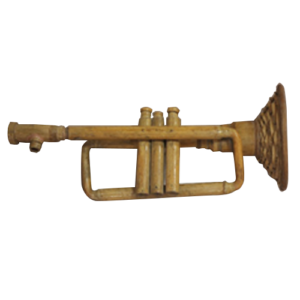Elementary Module
KUNDIMAN 1800 REHEARSAL PLAN
- Volume 2
Background
- Title: Kundiman 1800
Composer: Nicanor Abelardo Lyricist: Nicanor Abelardo
English Translation: Atilano Montesa
Arranger: Genaro Cesar Edilo Jr., October 2015

Lyrics
Kundiman 1800
Verse
Irog sandaling dinggin ang aking pagtangis Irog sandaling tunghan ang humihibik Kung ‘di man nararapat sa iyong dikit
Isang sulyap mo lamang, Aliw na ng dibdib.
Chorus:
Kung saki’y wala nang inilaang paglingap At ang pagdurusa ko ang siya mong pangarap
Sa isang ngiti mong sa aki’y igawad Libo mang kamatayan aking tinatanggap.
Kung Hindi Man was a piece composed in 1920 by Nicanor Abelardo. Its genre is called a “kundiman.” Kung Hindi Man has been used as themes in music performances and shows on stage held at the Cultural Center of the Philippines and University of the Philippines. Originally, the piece was written in the key of G minor for part A then modulated to G major in part B. In this arrangement, only part B is included, and it is in the key of C major.
Kundiman is taken from “kung hindi man,” a genre of traditional Filipino love songs. Young men sing the kundiman to express love and admiration for ladies through serenading in rural areas of the country. The lyrics and message of kundiman compositions were usually about love and sadness. Aside from Abelardo, another remarkable composer of kundiman music is Francisco Santiago. Santiago is known as the “Father of Kundiman Art Song.” Both have been known for their contribution of Kundiman songs.
This piece by Nicanor Abelardo has a variety of arrangements by other composers such as for piano accompaniment and voice, piano accompaniment and violin, and for the himig kawayan ensemble.
A. MATERIALS

Audio tracks – Scan QR code on the right
Sheet music – Kundiman 1800 arrangement by Genaro Cesar Edilo Jr.
B. GUIDE TO THE PIECE
The arrangement has only 1 part (A). The gabbang/marimba plays the melody all throughout the piece. On the other hand, the angklung and guitar play the accompaniment while the bumbong serves as the bass. Most of the rhythmic patterns are repeating and simple.
Measures 1 to 8 are the first half of the song, and the next 8 measures are the second half. The piece will go back to measure no. 2 after the first ending, which is in measure no.17. Then from measure 2, play the piece until measure no. 16. This time, the ensemble must skip measure no. 17 and go straight to measure no.18 (ending).
Time Allotment |
Material |
Instrument |
Measures |
Objective |
Activity |
Assessment |
| 30 minutes | Kundiman | gabbang/ marimba | 1–18 | Familiarize the students with the rhythmic patterns used in the piece. | Clap the rhythmic patterns. | Listen and correct how the instrumentalists execute the patterns by clapping. |
| 15 minutes | guitar and angklung | |||||
| 15 minutes | bumbong | |||||
| 40 minutes | All sections | Practice their parts in the piece. | Play their instrument by section. | Listen and correct how the instrumentalists execute the patterns by clapping. | ||
| 20 minutes | Perform ensemble Playing. | Play as a group. | Provide feedback and suggestions to improve
the group’s performance. |
Alwin Reamillo’s Nicanor Abelardo Grand Piano Project.” Accesed March 2022. http:// www.agimat.net/music/e081209.htm.
“Doodling Some Thoughts.” Accesed March 2022. https://irarenas.wordpress. com/2020/10/15/entry-133/.
“Make Way for CCP’s Virtual Musical Show ‘Kung Hindi Man.’ Accesed March 2022, https://mb.com.ph/2021/09/27/make-way-for-ccps-virtual-musical-show-kung-hin- di-man/.
Science in a creative industry.
The DOST-FPRDI has a Bamboo Musical Instruments Innovation R&D program aimed at improving the quality of locally-made bamboo musical instruments (BMIs) through science and innovative technologies. The program seeks to standardize the production of selected BMIs, develop prototype designs, analyze raw material sources and existing markets, and build a BMI processing facility. In addition, the program aims to document the ethnocultural story behind several BMIs and identify the bamboo species used in BMI production to promote public awareness and appreciation of the cultural importance of these musical instruments. The program is a collaboration with the University of the Philippines and Philippine Normal University for teaching modules and analyzing sound quality and standardization of BMI design. The DOST Grants-in-Aid program provides funding.
PhBMI






